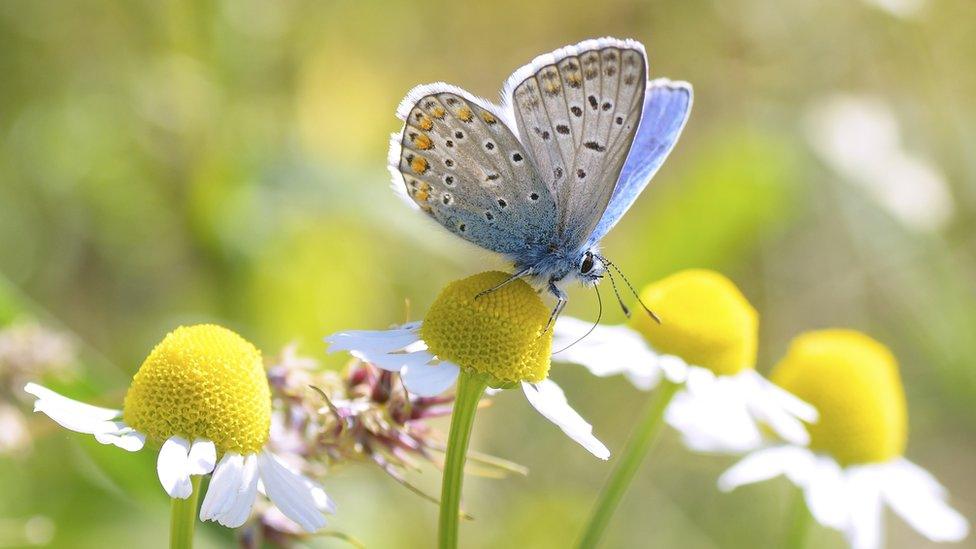Scientists identify butterflies 'most at risk' from climate change
- Published

Butterflies like these might have a harder time as our climate changes
Smaller, lighter-coloured butterflies are likely to be at greater risk from climate change, scientists say.
Butterflies all over the world are under threat, and researchers at the University of Cambridge have found a way to identify which ones we should be looking out for.
After studying a variety of butterflies they found that colour and wingspan affect a butterfly's ability to adapt to rapid changes in temperature.
The Lycaenidae family, which contains over 6,000 species that mainly live in tropical regions, was found to be particularly vulnerable.
This is a member of the Lycaenidae family
How butterflies regulate their temperature
Having darker and bigger wings only gave butterflies a small advantage however, as deforestation and heatwaves were a major threat to all butterfly species, scientists said.
The sun gives butterflies the energy they need to survive, but overheating can make them poorly.
However, butterflies thermoregulate, which means their bodies have tools to cool them down when they're hot, and heat them up when they're cold.
They can also find shady spots to sit in, or angle their wings away from the sun, but when this doesn't work they need to rely on bodily functions such as creating special chemicals called heat shock proteins that help them to withstand high temperatures.
Some members of the Lycaenidae family can be found in Britain, like this Green Hairstreak
What did scientists measure?
The ecologists - people who study the relationships between plants, animals and the environment - set out to measure two things: thermal buffering, and thermal tolerance.
Thermal buffering is how well a butterfly can change its body temperature when the air temperature is fluctuating.
Thermal tolerance is how well a butterfly can withstand extreme heat.
Using hand-held nets to collect the butterflies, they measured their temperatures using a tiny thermometer.
What did scientists discover?
Butterflies with large wings were able to change their temperature well, but couldn't withstand extreme heat.
Darker-winged butterflies also had high thermal buffering, and could tolerate higher temperatures than paler-winged butterflies.
Scientists also noticed a trade-off in butterflies cooling strategies: those good at thermal buffering were less good at thermal tolerance and vice versa.
This is a Juditha caucana butterfly from the Riodinidae family
Lead author Esme Ashe-Jepson, a PhD student at Cambridge's Department of Zoology, said: "Butterflies with physical characteristics that may help them to avoid the sun's heat, like having large wings that enable them to fly quickly into shade, rarely experience high temperatures, and so have not evolved to cope with them.
"On the other hand, species which can cope with higher temperatures physiologically have experienced less selective pressure to evolve heat-avoiding behaviours."
She said global warming means butterflies won't be able to rely on their normal coping strategies.
Ecologists have said further research is needed to investigate the effect a warming climate could have on other life stages of butterflies, such as caterpillars and eggs, and other insects.
- Published20 January 2021
- Published20 January 2020
